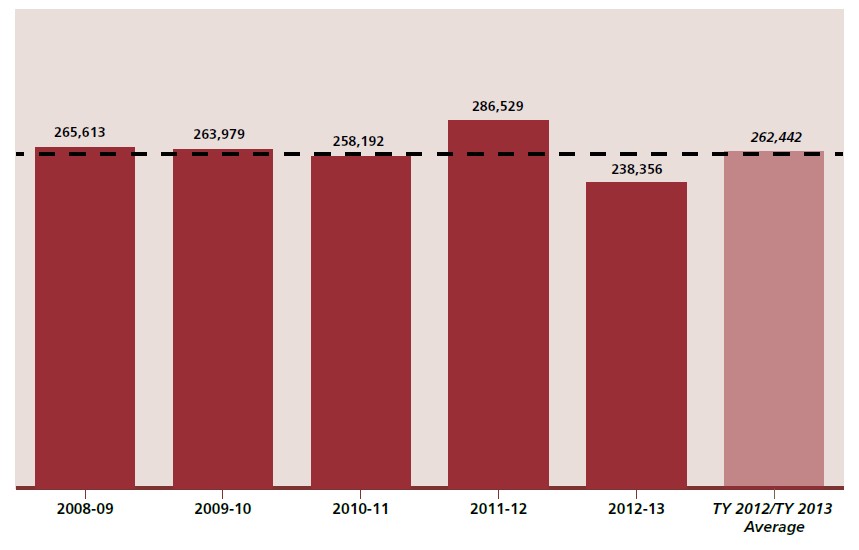
Half Fire, Half Ice (image source)
An article from WSJ this month, based on a report from the Graduate Management Admissions Council, asserts that the MBA application market is not “on a hot streak.”
However, that’s not really true. Here’s what the article and report are omitting or glossing over:
- First, note that the chart is counting programs with increases and decreases. That’s a weird way to report data, isn’t it? If some programs get way more applicants than others (and this is the case), then these data don’t mean much. And if applicants vary somewhat in how many programs they apply to (e.g., mean # of applications per applicant; and yes, this is the case, also), the data don’t mean much. Conclusion: the data in this graph don’t mean much.
- GMAC does actually release test taker volume from time to time. That data point is much more accurate than counting programs with increases and decreases, because test taker volume is pretty close to giving us a total count of the number of warm bodies each year who want MBAs (the final step is to factor out the percentage who test more than once). Here’s the data from the last time it was released (in the Profile of GMAT Candidates, 2013):
- Finally, non-US GMAT takers are known to be growing, so US GMAT test takers are stable, at best. This data is actually released from GMAC to its member organizations, the business schools, among whom this fact is common knowledge.
When the next Profile of GMAT Candidates is released, we might see some more legitimate “hotness.” But the current picture is the following: the US market is mature and tightening infinitesimally. We all knew this is a mature market, right? Some mature markets in the U.S. are undergoing upheavals (or should be) – we have the semi-historic lows in law school applications and the looming doctor shortage. But business school is pretty stable in the U.S. Meanwhile, MBA applications from Asia are, indeed, “on a hot streak.” Not all of these applications go to the US, however, and, more critically, there is a natural limit to how many international applicants a U.S. school could admit. MBA programs want 25-40% of their class to be international students, but generally not, say, 60%. So the impact of the “hot streak” is that it’s increasingly hard to get an MBA in the US if you are an international applicant. This part of the market is undergoing real change.
This article is part of the series, The Leader’s Brief. You can subscribe for email updates at www.theleadersbrief.com.

Leave a Reply